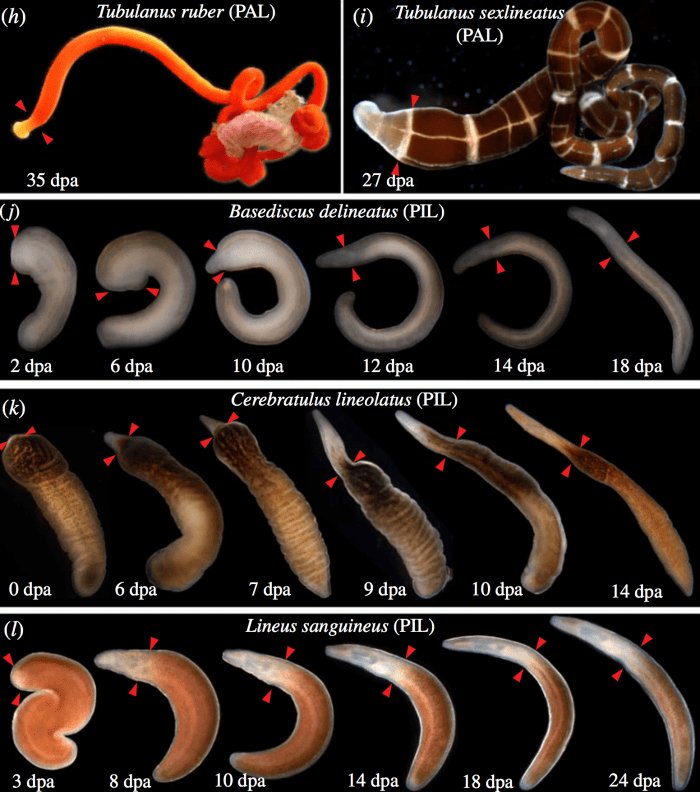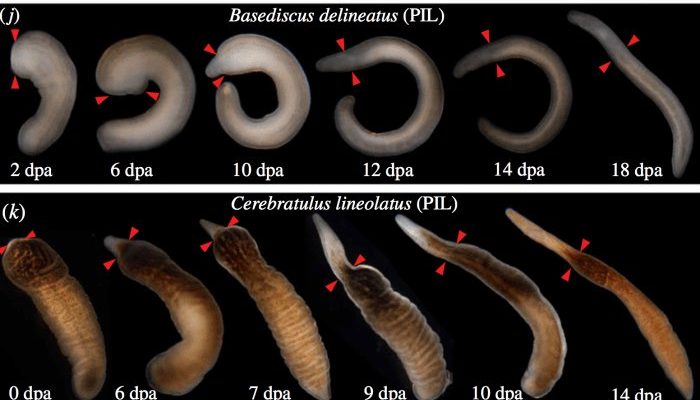
Ribbon worms, also known as *Nemertea*, are not just another ocean oddity. They have some of the most extraordinary regenerative abilities observed in the animal kingdom. Studying ribbon worm growth and regeneration not only helps us understand how they manage this feat but also offers insights into potential medical applications for humans. So, grab your favorite drink, and let’s dive into the intriguing world of ribbon worms and their incredible skills!
What Are Ribbon Worms?
Ribbon worms are long, thin, and often colorful creatures found primarily in marine environments, although some live in freshwater or even damp terrestrial habitats. They come in various species, ranging from a few centimeters to several meters in length. These worms have a unique body structure, which includes a muscular layer and an inner tube-like digestive cavity.
One of the most striking features of ribbon worms is their proboscis, a specialized feeding structure that they can extend rapidly to catch prey. Imagine a tiny slingshot that shoots out a sticky tongue to snag an unsuspecting meal! This adaptation allows ribbon worms to be effective predators in their ecosystems.
What’s even more interesting is their ability to adapt to various environmental conditions. Whether they’re burrowing in the sand or drifting in the water, ribbon worms have strategies to survive. Their versatility is a huge part of what makes them so intriguing to study.
The Science of Regeneration
Regeneration is a biological process where an organism can replace lost or damaged tissue. In ribbon worms, this process is particularly impressive. When a ribbon worm loses a part of its body—like a section of its tail or even a large portion of its middle—it can regenerate that lost part, often in a matter of weeks.
During regeneration, the affected area forms a blastema, a mass of cells that can differentiate into various tissue types. Think of it like a repair crew moving in after an accident, where the cells rebuild the lost structures. Researchers have identified that certain cellular processes, like those involving stem cells, are crucial in this regeneration phase.
Here’s the thing: studying how ribbon worms regenerate can provide valuable insights into how other organisms, including humans, might heal from injuries. Understanding these processes could lead to advances in regenerative medicine, where scientists aim to replicate such abilities in human tissues.
Stages of Growth and Regeneration
The growth and regeneration process of ribbon worms can be broken down into distinct stages. Let’s take a closer look at these stages.
1. **Injury Response**: When a ribbon worm is injured, it immediately initiates a response. Cells at the injury site start to divide rapidly, forming the blastema. This is the first sign that regeneration is underway.
2. **Dedifferentiation**: Next, some specialized cells change back into more basic, stem-like cells. This process is crucial because it provides the necessary raw materials for regeneration.
3. **Regrowth**: As the new cells differentiate, they start forming specific tissues like muscles, skin, and even parts of the nervous system. This stage can take several weeks, depending on the extent of the loss.
4. **Maturation**: Finally, the newly formed tissue matures and integrates with the existing structures of the worm. This is when the ribbon worm looks and behaves like its old self again.
Each of these stages is essential for successful regeneration. Understanding how these stages occur can help researchers develop ways to enhance regeneration in other species, including humans.
Factors Influencing Regeneration
Several factors can influence how well ribbon worms regenerate. Temperature, salinity, and the availability of nutrients are significant players in the regeneration game.
– **Temperature**: Warmer water temperatures can speed up metabolic processes, which might help with quicker regeneration. However, extreme heat can be detrimental, slowing down or even halting regeneration.
– **Salinity**: Ribbon worms are sensitive to salinity levels in their environment. If the salinity is too high or too low, it can negatively impact their health and ability to regenerate. This is particularly important for species that live in estuarine environments where salinity fluctuates.
– **Nutrient Availability**: Just like us, ribbon worms need energy to grow and heal. A rich supply of nutrients in their environment is crucial for their regeneration process. If they’re in an area with limited food sources, their ability to regrow lost body parts can be compromised.
By studying these factors, scientists can better understand how to support regeneration in other species or even develop strategies to aid human healing.
Applications of Ribbon Worm Research
Research on ribbon worm growth and regeneration extends beyond pure curiosity. It has real-world applications that could impact medicine and conservation.
For example, scientists are exploring how the mechanisms behind ribbon worm regeneration can be applied to wound healing in humans. This could lead to breakthroughs in treating injuries that currently take a long time to heal, like burns or surgical wounds. Wouldn’t it be amazing if we could speed up healing processes like ribbon worms do?
Additionally, understanding how ribbon worms thrive in various environments can provide insights into ecosystem health. As environmental conditions change due to climate change, studying these organisms can help scientists monitor ecosystems and develop conservation strategies.
The regenerative abilities of ribbon worms remind us that nature often holds the key to solving complex biological problems. By tapping into this knowledge, we might find innovative ways to improve health and preserve our planet’s biodiversity.
Future Directions in Ribbon Worm Research
The study of ribbon worms is still an evolving field, and there’s so much more to discover. As technology advances, particularly in genetic research and imaging techniques, scientists can explore ribbon worm biology in greater detail.
For instance, researchers are looking at the genetic basis of regeneration, which could reveal new pathways that might be manipulated to enhance healing in other organisms. By utilizing CRISPR technology, scientists can potentially edit genes to understand their roles in regeneration better.
Moreover, as we face global environmental challenges, understanding how ribbon worms adapt to changing habitats could inspire new strategies for biodiversity conservation. Scientists are keen to learn how these fascinating creatures respond to ocean acidification, pollution, and other threats.
Studying ribbon worm growth and regeneration isn’t just about these worms; it’s about leveraging their unique capabilities to unlock secrets that might benefit us all.
In conclusion, ribbon worms are more than just weird-looking critters of the ocean. Their incredible abilities to grow and regenerate provide a treasure trove of knowledge for scientists and enthusiasts alike. Each discovery about these amazing creatures brings us a step closer to unraveling the mysteries of regeneration and the potential applications for human health and conservation. So next time you see a ribbon worm, remember—there’s a lot more going on beneath that slimy surface than meets the eye!

